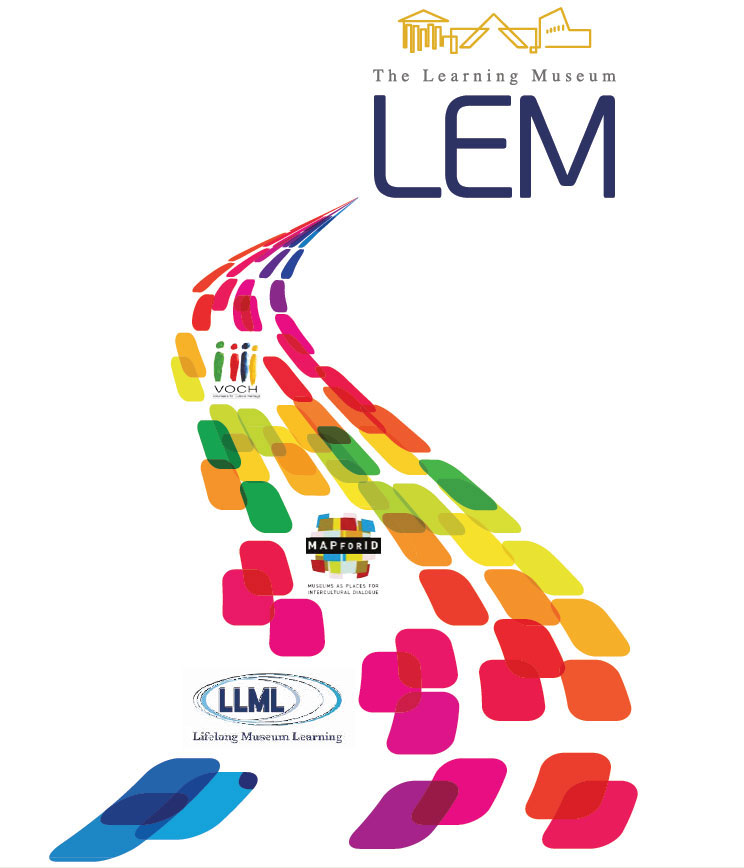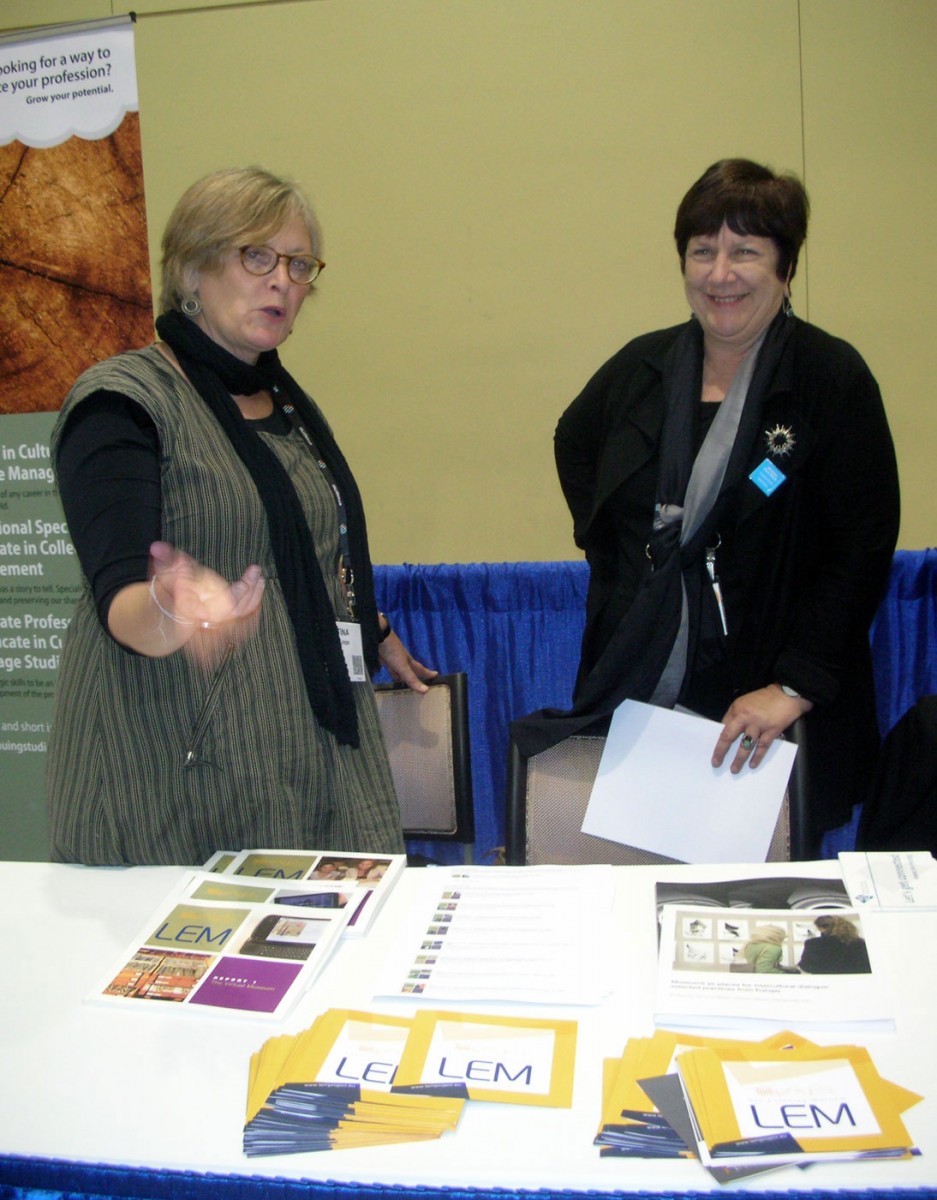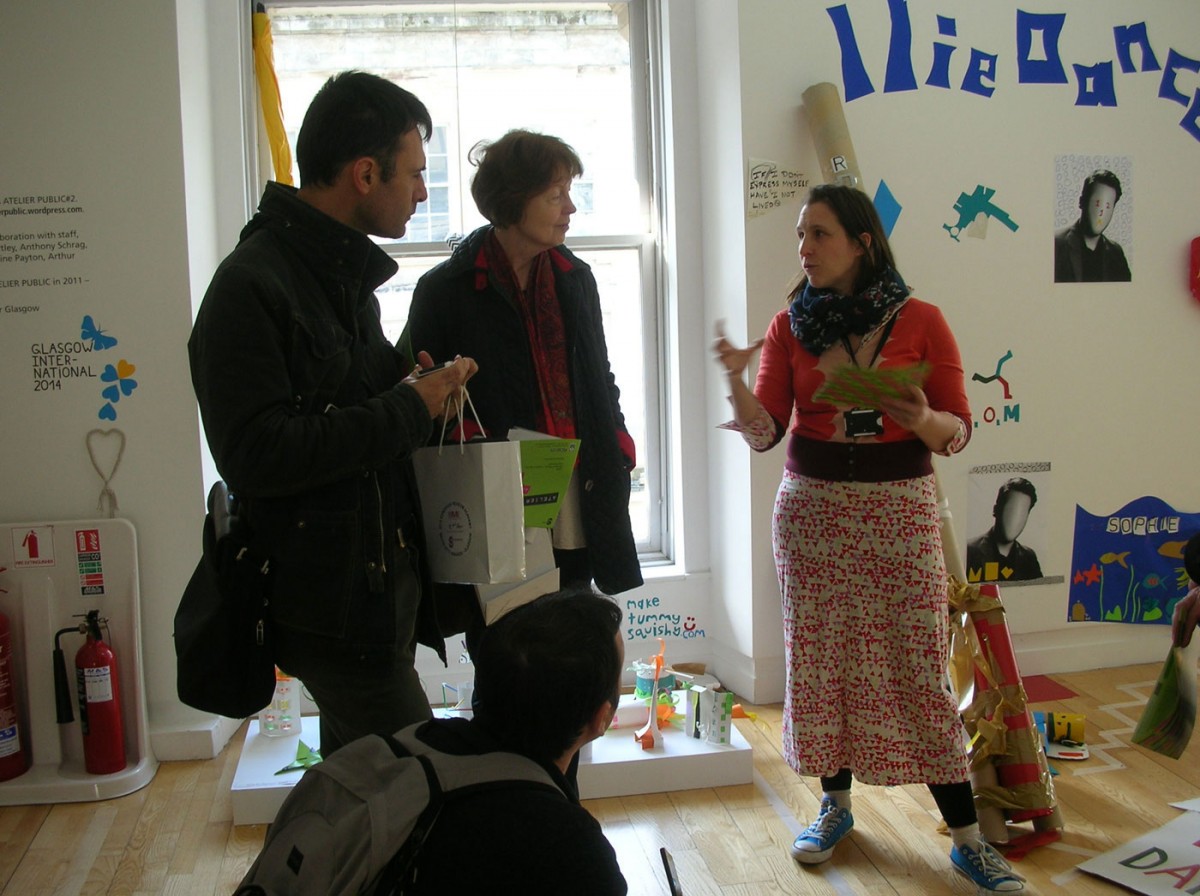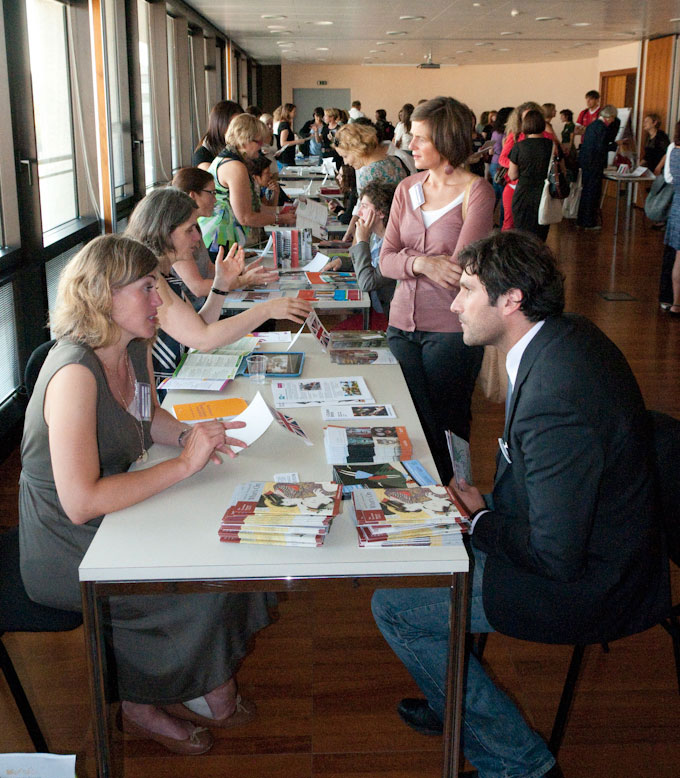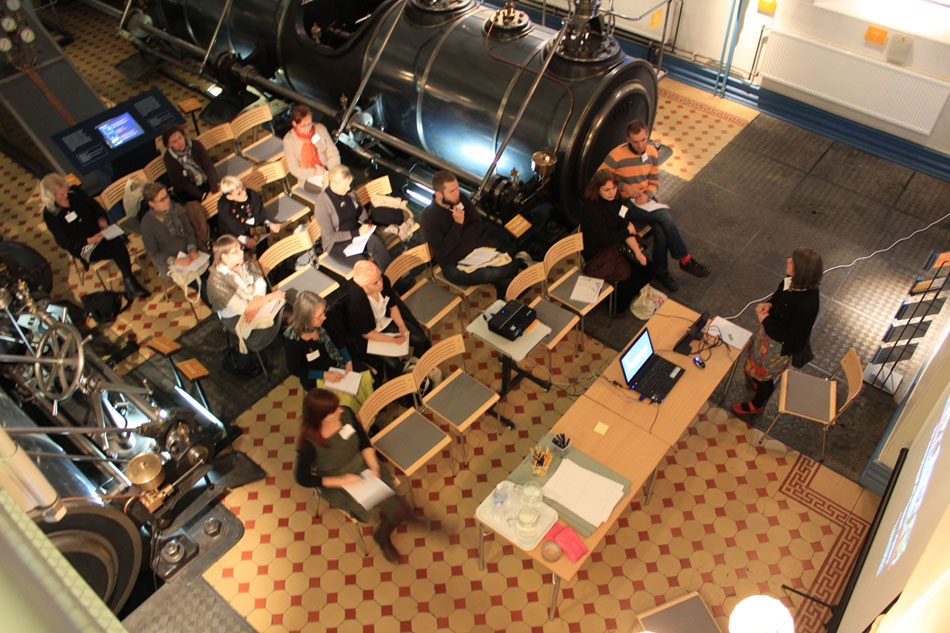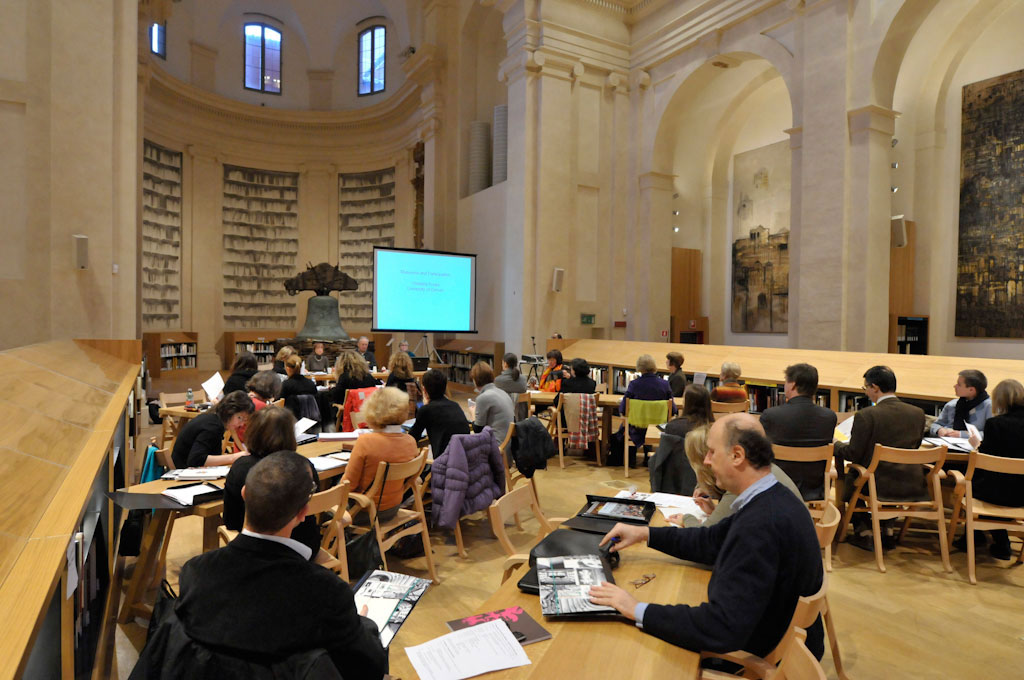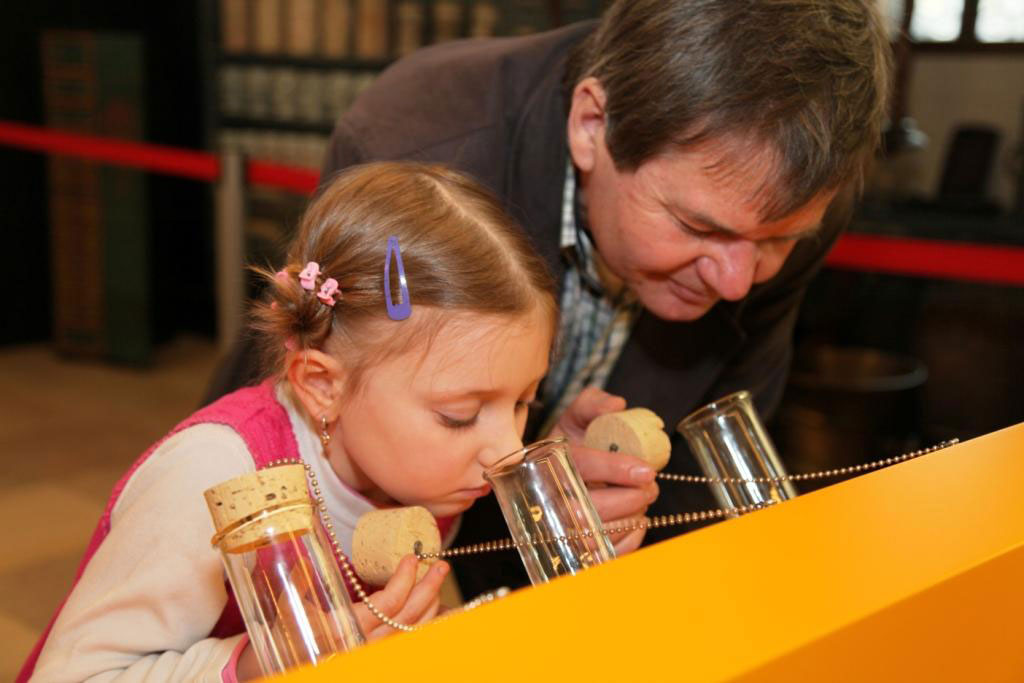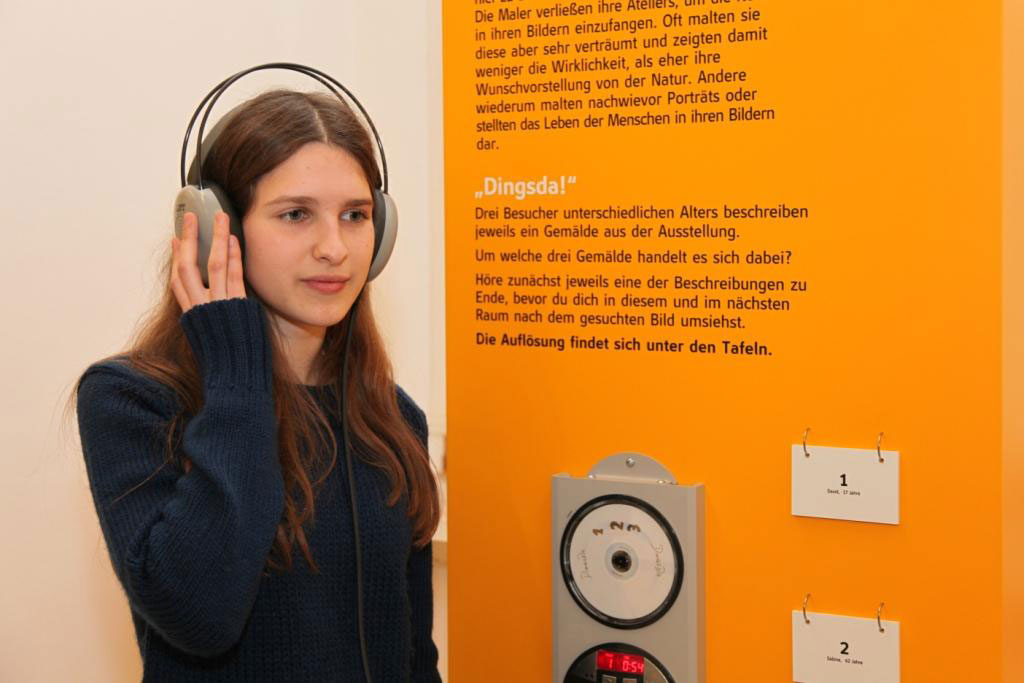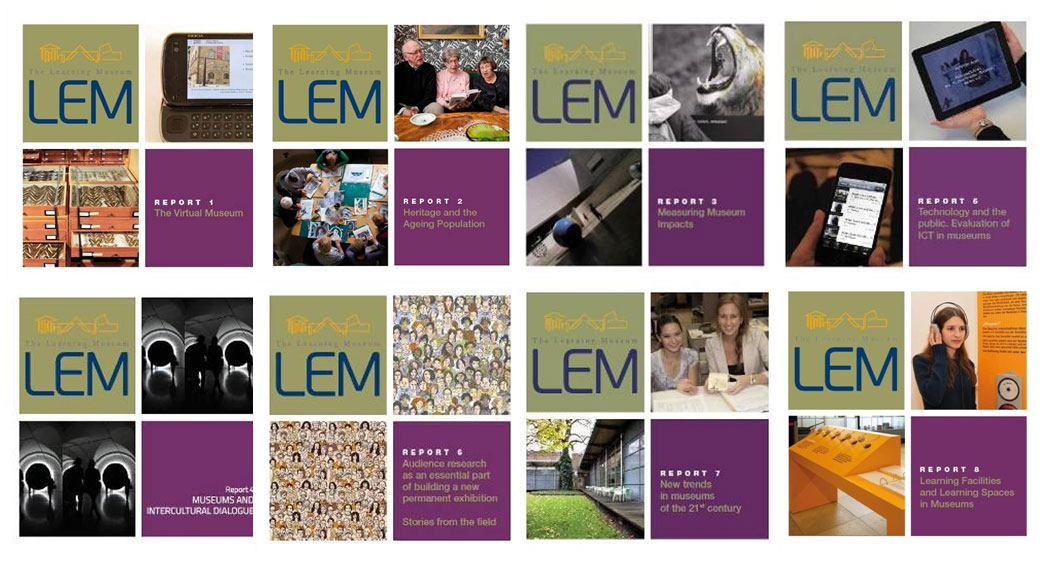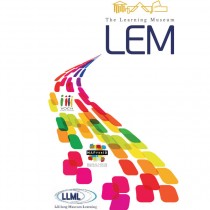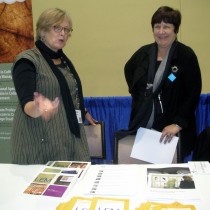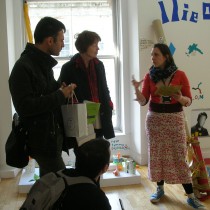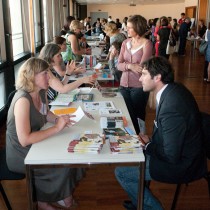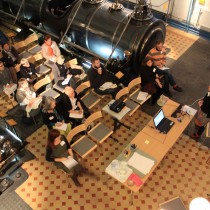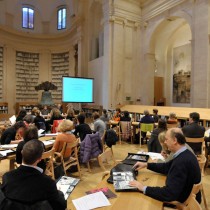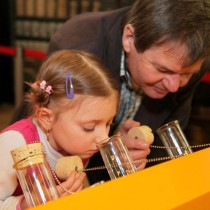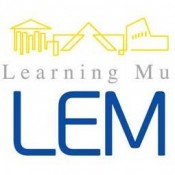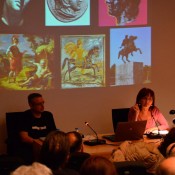Introductory note
The third section of the tribute on “Museums and Museology in modern society. New challenges, new relationships” has three new texts and will focus on the following three major concepts and strategic objectives that have concerned the world of museums from the start of the 21st century: learning, sustainability and technological innovation.
In the first article, Margherita Sani presents in a detailed and informative way the development framework of “The Learning Museum” a European programme. The presentation of the project, concerns both the methodology chosen to create and consolidate a European network of collaborations as well as the content of the work produced which today proves useful in many ways, to museum professionals and the academic museology community alike.
In the second article, Artemis Stamatelou examines the meaning of the principle of sustainability and reminds us that for 2015, the International Council of Museums chose the topic “Museums for a sustainable society” to celebrate the International Day of Museums, intervening in a discussion that had begun at the start of the 21st century but has intensified since 2008, due to the global financial crisis. Starting with examples of museum projects that were carried out with the support of European programmes, the article will focus on options and practices offered for securing the museum’s survival and fulfilling its social mission.
In the third article, Kostas Arvanitis tries to examine the framework for discussion and the practices created regarding the use, impact and challenges of information and communication technologies in museums. By commenting on specific examples of technological applications, the article raises two questions: The first refers to whether (new) technologies in museology and museography can be organically integrated and the second explores old, new and emerging technologies in museums and approaches questions such as “what”, “how” and “why” of modern museology technology.
Marlen Mouliou
Museology Lecturer, Dept of History and Archaeology, National and Kapodistrian University of Athens
The Learning Museum – LEM: An international network of museums and continuing education
Introduction: the history of a network
The Learning Museum (LEM) was a project for Continuing Education funded between 2010-2013 by the Grundvig Programme (note 1) under the broader term of “Networks”. Its goal was to create a permanent network for museums and heritage organizations, to explore their potential as places of learning and to play an active role in issues related to continuing education in a modern Europe that encourages knowledge. Today and since the funding has now expired for at least six months, it is difficult for me as the project’s coordinator to go back and reflect on LEM simply as a project with a beginning and an end and as something that has been completed. In fact, I think that despite the end of European financing, there are good reasons and evidence to support that the network remains functioning, continues to grow, transform itself and produce work.
LEM was the finish of a series of programmes related to museum education, intercultural dialogue, cultural volunteering and continuing education, all funded by the European Union between 2003-2010 (note 2) in which I personally participated and some of which I coordinated. At the same time, however, it was also the starting point for something novel, more complex and systematic. The challenge of LEM was to gather on just one network all the knowledge, reflections, experiences and particularly the personal contacts established over the years from previous collaborations, for this to become a permanent site for the exchange of ideas on learning, access to and dialogue with museums.
Although we had prior experience in managing multifaceted collaborative programmes, we were also aware that networks are special ventures: namely that even though programmes, in general, aim to produce work, networks focus on processes and therefore require different evaluation criteria. For this reason, the design of LEM was accompanied by the additional study of the reference book The Art of Networking (note 3), a guide, we could say, on the installation, management and evaluation of networks, as well as their sustainability, based on a general theory of networks. This book’s study and the meeting for the purpose of research with authorized members of LEM gave the programme a specific orientation and determined the network’s final structure.
What kind of network?
Through LEM we wanted to gather and make available both to a wider audience and to those that shared the same research interests with us, all the theoretical knowledge we had collected as well as the expertise we had gradually acquired through other programmes. The crucial question was “in what way?” At this point the guide for The Art of Networking was a great support: “European networks can be considered as ventures exceeding a widespread perception that is restricted to creating personalized programmes… A network funded by the European Union is expected to become an important factor in the relevant field of activity, at a European level… an expectation that presupposes a long list of specific commitments that the network is asked to meet” (note 4).
It was decided that LEM should be a network for research and the disseminating of information with the website www.lemproject.eu as its key communication platform. “Networks relate to learning and networking… the objective of European networks should be to bring together professionals, experts and those in general who are policy makers of a particular field, as well as creating an institutional framework for networking” (note 5).
This aim was, indeed, our main concern and effort: namely, the forming of an institutional framework that will bring together individual bodies with the institution, that will both network and foster learning. An effort that incorporated the expertise gained from previous projects, encouraged the acquisition of new experiences, and made correlations with knowledge already acquired.
At the start of the venture, the programme had 22 member organizations from 17 European countries and one from the USA: museums, museum associations, as well as academic and research institutions. Furthermore, a mechanism known as Associate Partners was designed (note 6) through which the network could grow with the participation of new organizations.
Working Groups
Once the overall objectives of the network were agreed on, the key issue that had to be addressed was its operation, its mechanisms and organizational structure to be selected for the network to be as effective as possible. As expected, with a partnership of 23 bodies different in nature, size and scope of activity, not all participants would display the same degree of commitment to the network, depending of course on their interests and autonomy as institutions. “The art of network management concerns the determining of the appropriate position and role of each body involved” (note 7). Consequently, a structure was designed allowing different types of engagement and participation-something that was of course also reflected in the sharing of the budget-with some key members taking a more active role while others, a little more on the outside, mainly taking on the part of a transmitter for disseminating information
Based on the theory of network management, it would be wrong to select a centripetal management model, precisely because of the diversity and great number of participants. It was, therefore, decided to divide the programme into fields of activity and to choose an organizational system of sub-units, assigning a coordinator to ensure the connection between the parties. Thus emerged the working groups. Being orientated both towards research and the locating of the best possible tactics, these groups supplied the network with information, while for their actual members, they constituted a smaller and more focused framework for the exchange of ideas and information. Since the Working Groups had to reflect the participants’ real interests, they decided on the following topics:
– New trends in 21st century museums
-Museums and an aging population
-Visitor surveys, learning methods and visitor management
-Museums as fields of learning-Learning spaces in museums
-Museums and intercultural dialogue
The partners could choose to participate in one or more Working Groups, each of which was coordinated by another member and was supported by a “mentor” belonging to the leading body, the Istituto Beni Culturali of the Emilia Romagna region. The Working Groups operated with a great degree of independence and had separate budgets to allow for the organizing of workshops independently from the rest of the consortium, as well as organizing educational visits: This was a choice that proved to be particularly effective in identifying good practices and understanding the work concepts in different countries. Each Working Group submitted research material which was notified to the website repository, supplying distilled knowledge in the form of published reports:
-Report no1 “The Virtual Museum”
-Report no 2 “Cultural Heritage and an Aging Population”
-Report no 3 “Assessing the Museum Impact”
-Report no 4 “Museums and Intercultural Dialogue”
-Report no 5 “Technology and the Public. Assessing Information and Communication Technology (ICT) in Museums”
-Report no 6 “ A museum visitors’ survey as an essential part of designing a new, permanent exhibition. Stories from the field”
-”Report no 7 “New Trends in 21st century Museums
-Report no 8 “ Learning equipment and areas for learning activities in museums”
In addition, one Working Group put together a visual catalogue of sites made available for learning activities in European museums (note 8), while another created a short film reflecting on museums as places of emotions and encounters (note 9).
The findings of LEM in brief
In terms of its content the philosophy of the LEM network is based on the notion that a museum constitutes an organization for learning: “A learning organization facilitates the learning process for each of its members and is being constantly transformed…Learning organizations are ones where the subjects are constantly exercising their abilities to bring about desired results where new and more open minded approaches are cultivated, where collective expectations are released, where the subjects constantly learn to acquire the control of things” (note 10).
Moreover, learning organizations:
-Provide continuous opportunities for learning
-Encourage research and dialogue
-Facilitate the learning process for their members and employees
-Embrace creativity as a source of energy and renewal
-Are constantly aware of and interact with their environment (note 11).
Using these concepts as our foundations, we set out to explore how museums, which by definition are environments for learning, support the philosophy of learning organizations: namely, how they develop reflective practices to identify, promote and assess the quality of learning processes inside and outside a museum and how individual and collective learning is associated with the institution’s evolution and transformation.
The survey focused on various issues whose depth and breadth is reflected in the titles of LEM’s published reports: namely, expanding the groups of visitors, intercultural dialogue, an aging population, use of technologies, assessing the impact of museums in society, learning equipment and use of museum spaces for learning activities. All these issues can be studied on the basis of research on current trends in 21st century museums.
The picture of the museum emerging from LEM’s survey conducted between 2011 and 2012, on the one hand regards an institution whose existence and ability to provide cultural services is threatened by cuts in the budget and the reduction of staff. On the other hand, however, it regards a living organization putting up a strong resistance, trying to keep up with innovations, accepting the increasing importance of digital media and social networking, cultivating fruitful relations with volunteers and local communities, struggling for social inclusion and caring for the environment.
In total, LEM’s findings can be summed up in some key concepts:
Participation
Over the last decade there has been a development of participatory and collaborative approaches to museum practice and the interest in the issue culminated with the publication of Nina Simon’s book The Participatory Museum (note 12).
The survey revealed many examples where participatory approaches are used to convert the museum into a more responsible organization, actively involved in community life and sincerely interested in providing a platform for the public. This was despite the task of attracting larger groups of visitors being often determined both by economic pressures as well as by the need to provide the sponsors with evidence of the rate of visitors. Such are the cases of the Manchester Museum with its programme “Collective Conversations” where the public is involved in an open dialogue about the meaning and interpretation of objects (note 13) and the Glasgow Museums with the “Staff Ambassadors Programme” that aims to equip the employees with the necessary skills so as to provide more community orientated services (note 14). There is the case of the Riverside Museum as well, also in the city of Glasgow which, during the design of a new building infrastructure and new exhibits, organized five different advisory sessions for speakers. The aim was to provide specific information on decision making, establish permanent ties with the public, improve access and encourage greater participation from the community (note 15).
Research and Expansion of the museum’s visitor base
Expanding the base of the social groups in museums (audience development) became a key concept in a theoretical debate on museums at a European level and is now considered an important priority in the EU Creative Europe Programme 2014-2020 (note 16). In general, the term refers to ways in which “cultural organizations respond to the need of engagement with social groups using new innovative ways in order to preserve, expand and differentiate them by approaching even those not yet part of their current public, to improve the experience not only of existing but also of future groups and strengthen their ties with them”.
Research in diverse social groups is a necessary condition for expanding the visitor base. LEM, consequently, devoted one of its published reports on this issue (note 17), exploring the way it was used as part of the design process of new permanent exhibitions in the following three museums: the Riverside in Glasgow, the Gallo-Roman Museum in Tongeren, Belgium and the Forssa Museum in Finland. The Riverside has already been referred to as an example that demonstrates how the involvement of representatives of different social groups in an advisory role can significantly determine the redesigning of a museum. The Gallo-Roman Museum, an archaeological museum reopened in 2009 after three years of refurbishment that brought about a completely renovated permanent exhibition, carried out a large scale quantitative survey during the time its operation had been suspended. Its aim was to explore what and how existing and potential visitors of the museum wished to learn about the past. The statistical analysis was used as a tool to classify the characteristics of their visitors into idealized types (with reference to Kolb’s theoretical model of the four learning types) (note 18), characteristics that were taken into account by the museum’s staff during the design of the new exhibitions.
On the occasion of its refurbishment and wishing to involve the locals in its design, the Forssa Museum started a survey, initially by informally gathering citizens’ views on how they interpreted the concept of local identity and then it continued a long term research through targeted questionnaires and surveys so as to ultimately provide for comments to each interested party a script and a preliminary draft for future exhibits. Though not all the ideas the visitors came up with were implemented by the museum’s staff, some nevertheless did actually influence the decisions on the design of new exhibits. What was achieved in each case was the establishing of a stronger and more lasting bond with the community.
For all three institutions, the survey of groups of visitors was both a challenging and exciting learning process, as shown by LEM’s published reports and the standard questionnaires used.
Intercultural Dialogue and Social Cohesion
Nowadays, “intercultural dialogue” is an expression used both often and excessively. In a continent such as Europe which principally over the last two decades is experiencing a new and important wave of migration, museums like other cultural institutions are invited to become meeting places of people from different ethnic backgrounds, thus contributing to their integration and social cohesion.
The LEM Working Group that addressed the issue was itself an example of how “intercultural dialogue” can take on a different meaning depending on each national framework, starting with the Group’s two leading organizations, namely the German Museum Association and the National Gallery of Latvia. Germany (who for decades defined itself as a country without immigration despite the existence of conditions for concerted mobility between many other nations for the integration of a temporary workforce), only very recently, in 2006, recognized as its key political objective to integrate citizens with a history of immigration. This recognition contributed to museums systematically incorporating this issue in their work. In Latvia, on the other hand, the term, primarily and almost exclusively, refers to support processes for the integration and peaceful co existence between Latvians and Russians who emigrated to that country after World War II and make up 30% of its population. The decree passed in 2011 by the Latvian government on national identity, social memory and social inclusion gives museums a very important role in supporting mutual understanding and the shaping of a more integrated society for the country.
Having established a vocabulary of basic meanings and terms to investigate the semantics of the concept “intercultural dialogue” and to facilitate communication between its members, LEM’s Working Group for “Museums and Intercultural Dialogue” produced a report (note 19), including among other items the minutes of an international conference, that considered museums’ broader social role and investigated the responsibility they have in offering opportunities of participation in cultural events to all people regardless of origin and background, using as a reference framework different national policies on cultural integration and social cohesion.
An Aging Population and Learning across Generations
“The graying of Europe” is an expression used as a metaphor to describe the fact that the percentage of elderly people in the population is rising steadily in relation to its workforce, as opposed to the dwindling number of younger generations. Over the next years, the member states of the EU will have to address the challenges raised by the issue of an aging population, to develop strategies and discover new methods of building the social fabric, both economically and socially
Through different initiatives, various communities in Europe tried to use cultural heritage to stimulate the mental health of the elderly. Various events, such as workshops for reminiscence projects and object handling, voluntary participatory art and exhibition curating, offer evidence that those of the elderly who get involved in cultural activities, speak positively about the programmes. Many times, in fact, they even show signs of improvement, a greater sense of well being regarding their health, quality of life and strengthening of their social relations.
The Working Group’s publication “Cultural Heritage and the Aging Population” (note 20) presents the results of research carried out by the Group that focused on the analysis of European policies for the Elderly and on collecting good practices. Providing guidance to professionals and recommendations to policy makers, the report inspires specialists to design new projects and programmes, to address and serve all those who, in subsequent years, will certainly be a substantial part of the public for museums and cultural organizations.
Technology and the Virtual Museum
The first published report compiled by LEM with the title “The Virtual Museum” (note 21) looked at ways in which the internet, digital and social media and technology in general have influenced museums. These included programmes such as Europeana and Google Art, the development of applications that encourage the making of personal, individualized concepts by the visitors and even the perception that technology transforms the nature and role of museums from being organizations centred on collecting to being ones centered on knowledge, the nodes of a potential cognitive network. All this would be according to the concepts of participation and expanding the public, as mentioned above.
At present, these two dimensions, the actual and the potential (virtual), are inseparable. The one is entirely tangible with the presence of actual objects in a museum environment (still the advantage of museums), the other entirely intangible but according to museology, with tremendous influence. The museum’s website becomes a museum in itself, providing most of the social functions of a real museum via the web, and sometimes with a different type of public that no longer qualifies as a “visitor” but as a “user”. Personalization through information and communication technologies (ICT) allow museums to identify their visitors, collect and store information on their interests and preferences, create different types of content, and ultimately to organize and disseminate this (the content) so as to satisfy the visitors’ specific needs.
Part of LEM’s research aimed at understanding the way users practically put the multimedia to use and the way the way they would also wish to use them in future to enhance their cultural experience online and on the website. For this purpose, the Work Group set up a framework for assessing the impact of technology on the public. This included “Visitor surveys, learning methods and visitor management” (note 22) to be used as a common format by different organizations wishing to understand their users’ behavior in relation to the function of multimedia and to utilize a common standard for comparing results.
Evaluation of the Impact
During three years of the programme, LEM’s working group with its “Visitor surveys, Learning methods and visitor management” focused on several issues, with a particular interest in museum visitors and expanding their public, visitors’ studies and their related methodologies, the use of technology, multimedia and their effect on the public, the role of information and communication technologies (ICT) in creating and strengthening an enduring relationship with the public, utilizing the survey of the public when designing exhibitions orientated towards learning, the different learning types among visitors: all the above so as to develop an anthropocentric approach (centred on people) that is really directed towards the visitor in the museum.
In some way, the Group felt it was necessary to acquire tools of methodology to measure the success or failure of all the initiatives taken with the aim to expand the visitors’ base and improve the quality of a museum visit. In actual fact, the widening of boundaries and the role of museums are consistent with the increasing need felt by the latter to prove their “value” by displaying ability and efficiency in a way that is not just related to the institution’s temporary form but takes into account values cultivated in museums such as intellectual, cultural, social, historical, symbolic and educational.
As an expert in the field, Alessandro Bollo (note 23) was asked to assist in the research activities of the Working Group by establishing an overview of key issues related to different evaluation methods of the museum impact, whether financial, social, environmental, relational and determining for each aspect a method and appropriate indicators. LEM’s published report “Assessing the Impact of the Museum” (note 24) not only offers an overview of key issues related to these methods but also practical information, guidance, case histories, a selection of research and evaluation studies (with their related indicators) all carried out in different contexts and different methodology approaches with their relevant bibliography.
LEM’s Sustainability
As mentioned at the start, the LEM programme officially expired in October 2013 but we are confident that the network will continue to function and today we are working on securing its sustainability. In its three years of operation, LEM expanded significantly via the mechanism of Associate Partners and currently lists 88 members from 25 countries, USA and Argentina included. It is still possible to participate in LEM as a member of Associate Partners and several organizations have registered after the programme’s official closure (note 25).
The closing conference in Bologna (note 26) from 18th to 20th September 2013 with all members and many Partners was a celebration of the network that honoured the people’s physical presence and further encouraged collaborations and the emergence of new ideas through the Agora, a space for meeting and networking that was set up next to the auditorium where the conference took place.
Several smaller scale programmes were designed from there and later submitted to the European Union for financing, ideas were developed for bilateral cooperations and the organizing of events for 2014 was discussed. Some of these events have already taken place while others are expected to happen over the next months. NEMO (the Network of European Museum Organizations) and LEM have come to a mutual agreement on a merger for the following months, with LEM constituting one of NEMO’s Interest Groups and LEM’s website being incorporated in that of NEMO.
Everything seems to be pointing in a promising direction. We are confident that all this hard work of so many people over the last three years, all the contacts made and all the collective ventures started shall not be wasted.
Margherita Sani
Project manager, Istituto Beni Culturali, Aemilia Romana, Italy. Member of the Board of Directors of NEMO
